By now, virtually everyone in the world has become aware of the atrocious and blasphemous opening ceremony of the Summer Olympics in Paris. I don’t plan to spend a minute of time describing the awful scene, but, since it happened in the traditionally Catholic country of France, it forms the backdrop to this newsletter.
I fully endorse what Catholic Action President, Thomas McKenna, said in his statement after the event:
It wasn’t the French people who did this, let alone the faithful Catholics, who had no part in this obscenity. It was done by a group of radical French blasphemers on the left who committed this moral hate crime against Catholic France. And of course, not one of those satanic beasts had the courage to make similar displays against Islam or any other faith.
He is totally correct. Principles and moral courage are not part of the anti-Christian worldview.
Due to various political machinations and manipulations, a radical leftist government was imposed on the French people even though that government lacked overwhelming support in the recent elections. But they do have to live with the results of it. And blasphemy is one of them.
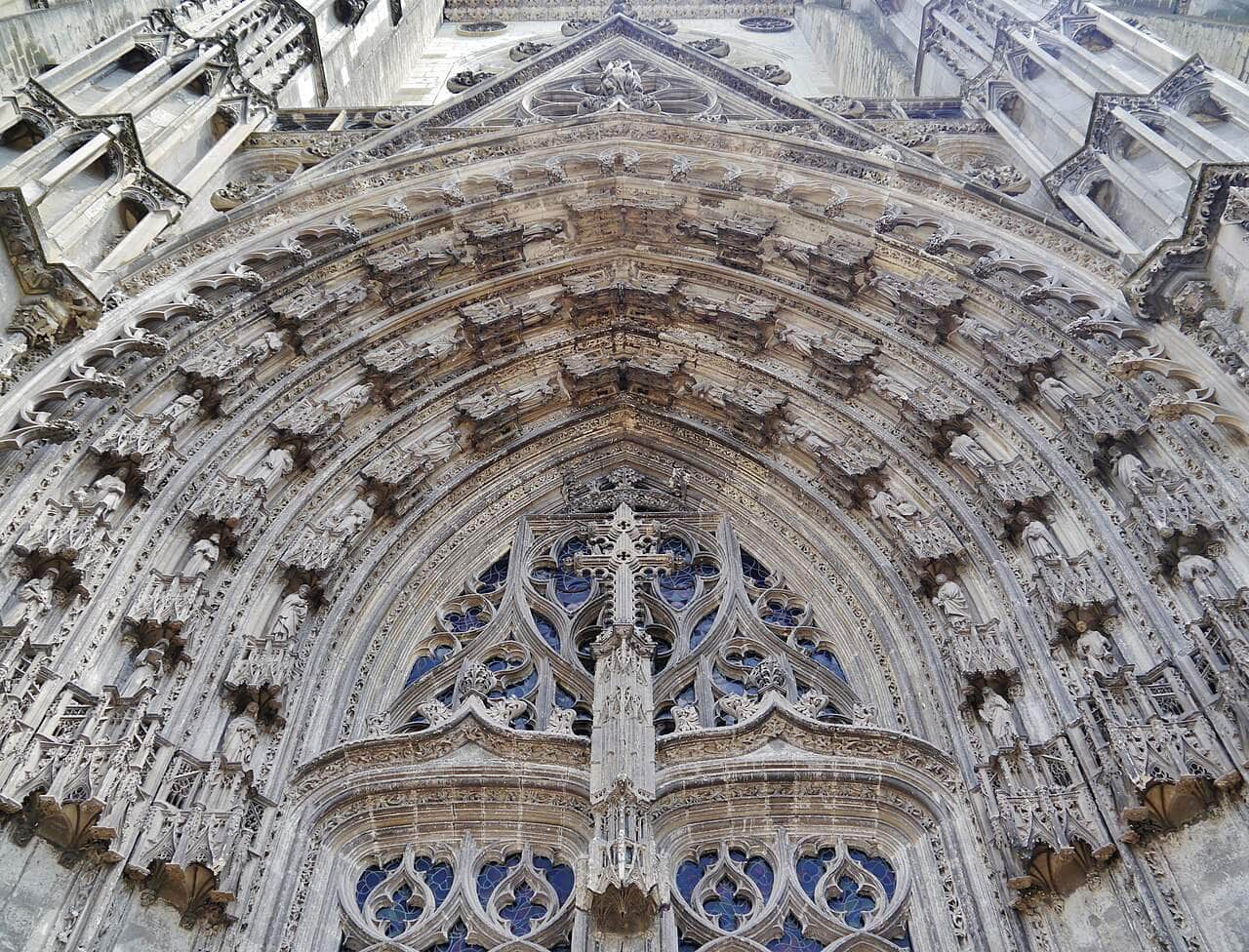
The Power of Faith and Prayer
It is a little known fact that the French Revolution (1791-94 AD) led to an increase in blasphemy and cursing in Europe as a whole. The years-long atheistic, anti-Catholic glut of violence in France also normalized the habit of taking the Lord’s Name in vain everywhere else.
In response to the blasphemy, an Italian Jesuit named Luigi Felici wrote the litany we now know as “The Divine Praises,” which we recite at every Eucharistic Benediction service.
A priest told me that he was once woken up by a phone call in the middle of the night from a Satanist who somehow got ahold of his number and called simply to shout blasphemies at him through the phone. The priest responded by reciting the Divine Praises in reparation for the evil act, and soon the man stopped blaspheming and hung up, never to call again.
That is just a small example of the power of faith and prayer in response to the power of wickedness in this world.
The Power of Beauty
But faith is not the only power that counters the work of evil. Beauty does too, especially when inspired by faith. It is incredibly effective in nullifying the pervasive ugliness of the world, the flesh, and the devil—and no one does beauty better than the French!
Apart from their food and fashion, France rightly counts the creation of the magnificent Gothic cathedrals as its own glorious heritage of beauty. There is really nothing at all like a Gothic cathedral, and the French invented the very concept. Historian Paul Johnson says that
The medieval cathedrals of Europe – there are over a hundred of them – are the greatest accomplishments of humanity in the whole theater of art. They are total art on the grandest scale, encompassing architecture at its highest pitch, and virtually every kind of artistic activity, from carpentry to painting…. Moreover, they are still in daily use as the most holy places of the Christian God, a span of nearly an entire millennium: no other works of art have been in service so continuously and for so long.
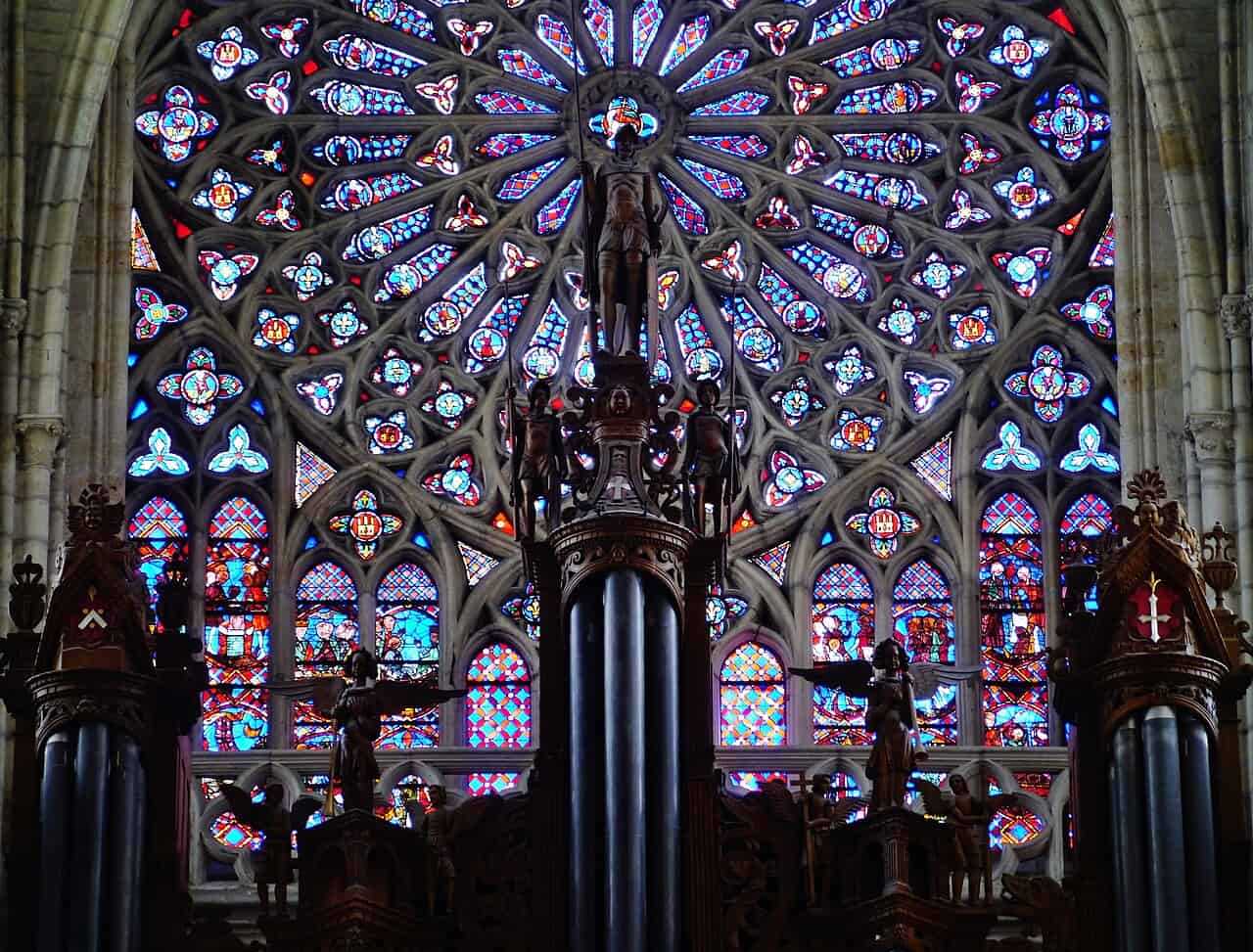
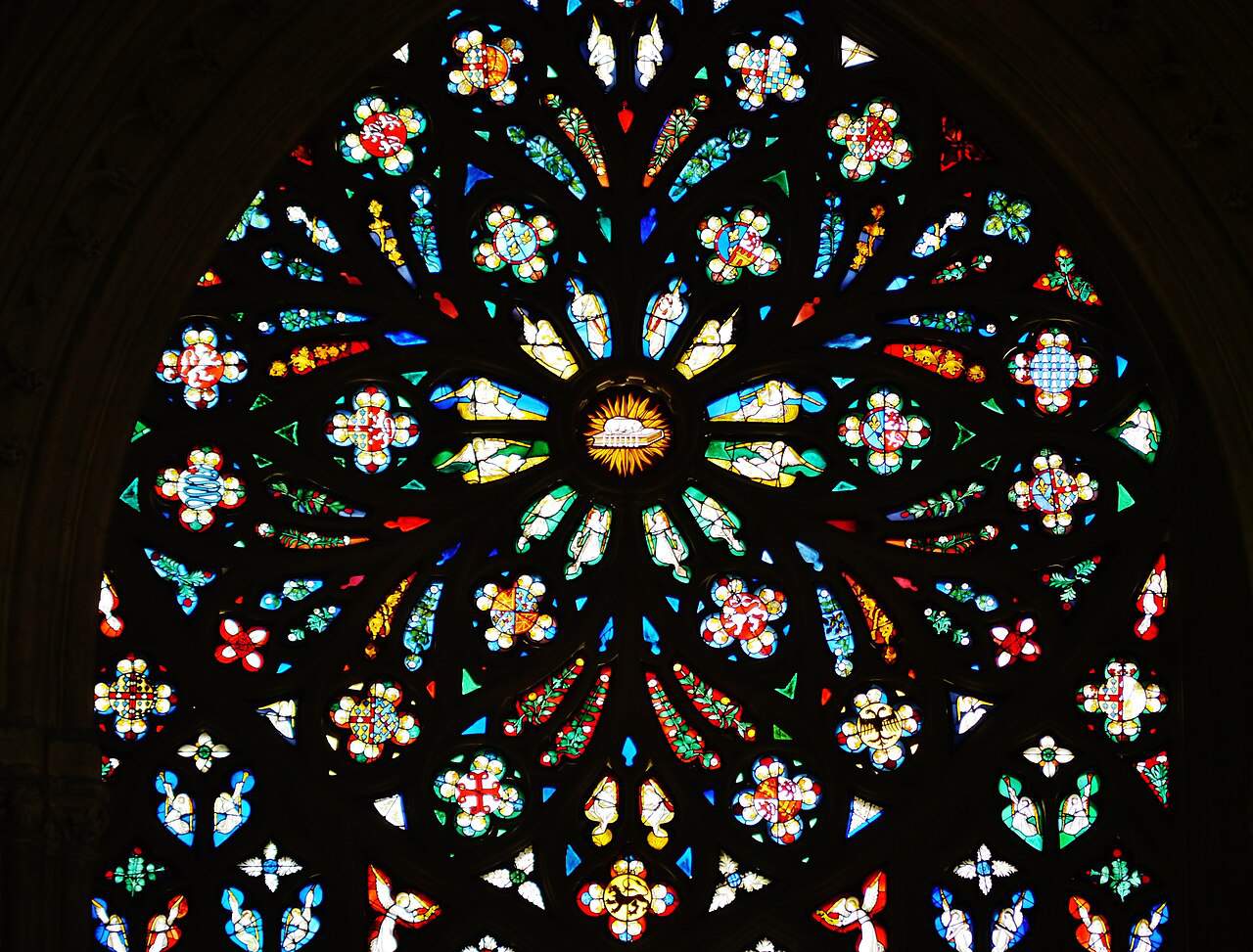
These majestic cathedrals dot the entire landscape of Northern France to this day and were the inspiration for all the subsequent Gothic movements in other countries.
When an authority like Paul Johnson claims that these structures are “the greatest accomplishments of humanity” in art, we should not pass that off as hyperbole. There is simply nothing to compare with them in the world.
More importantly, they did not spring from the earth on their own. Only a civilization deeply imbued with the Catholic faith could create them.
On that matter, I am sure that the re-opening of the renovated Notre Dame Cathedral in Paris this coming December will itself be a dramatic counterpoint to the Olympics blasphemy.
So also is every single, blessed, Gothic structure in Catholic France.
The Lace Cathedral in Tours
Certain of these wondrous churches—Notre Dame in Paris, St. Denis (the first Gothic structure), Chartres, Rheims, Amiens, and the like—tend to get all the press. 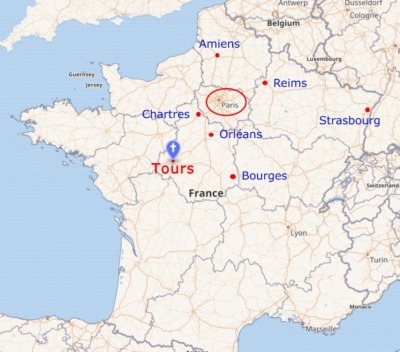 But one jewel of architecture that gets overlooked is the cathedral of the city that St. Martin of Tours made famous.
But one jewel of architecture that gets overlooked is the cathedral of the city that St. Martin of Tours made famous.
It is called the “Lace Cathedral” for a reason (don’t bother googling the term or you’ll be awash in advertisements for lace church veils and wedding gowns!)
Its full name is the Cathedral of Saint-Gatien of Tours, and it took nearly four hundred years to build (1170-1547). In fact, there is a local French expression—“until the cathedral is finished”—that is used to signify any presentation or project that drags on forever!
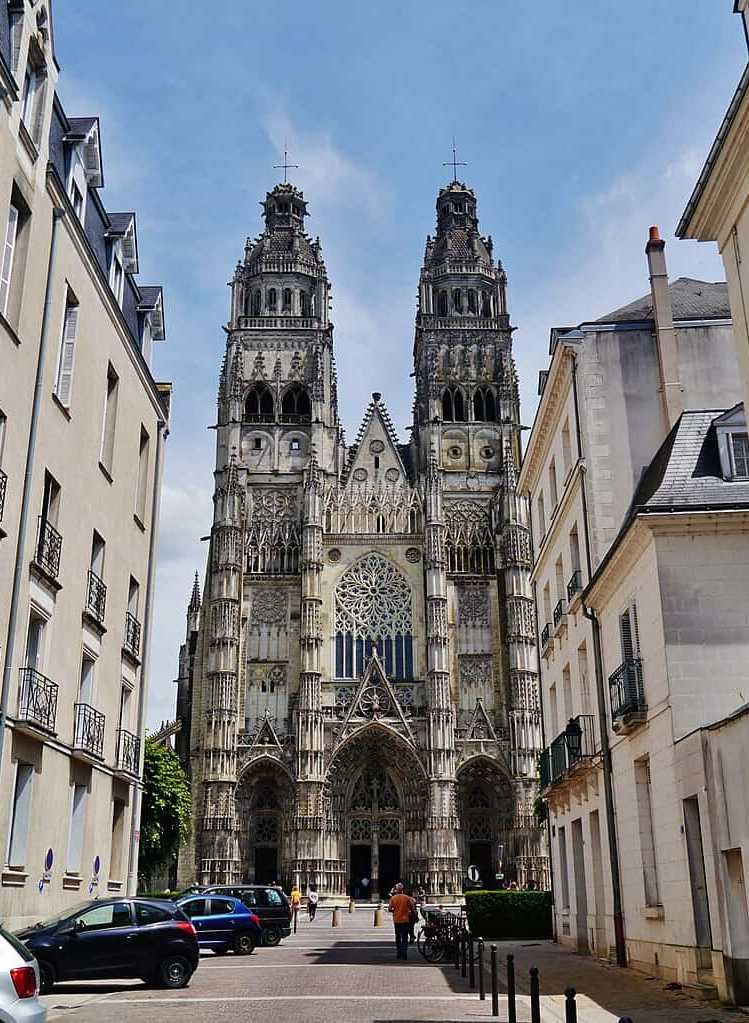
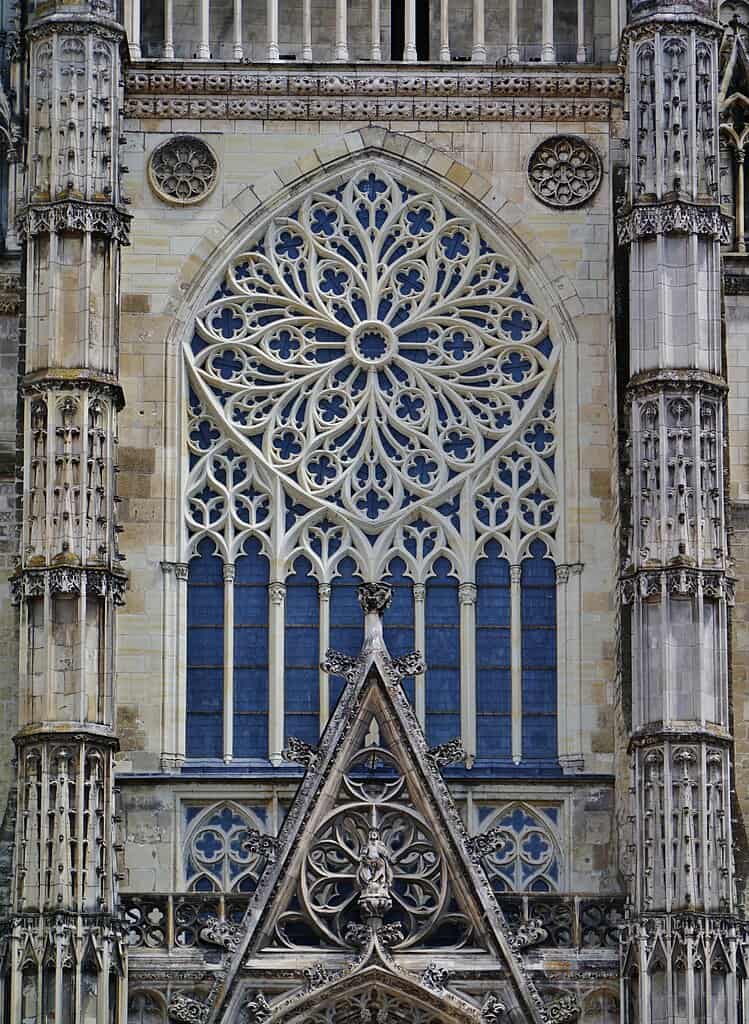
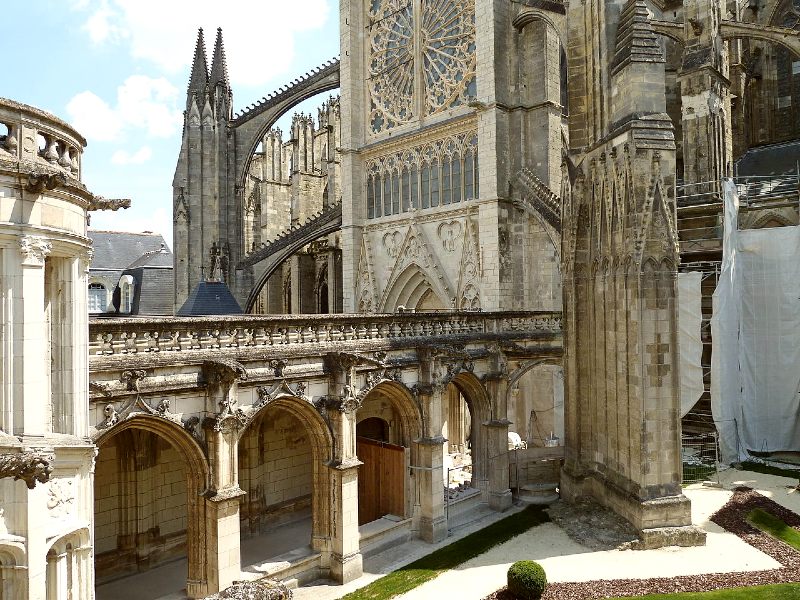
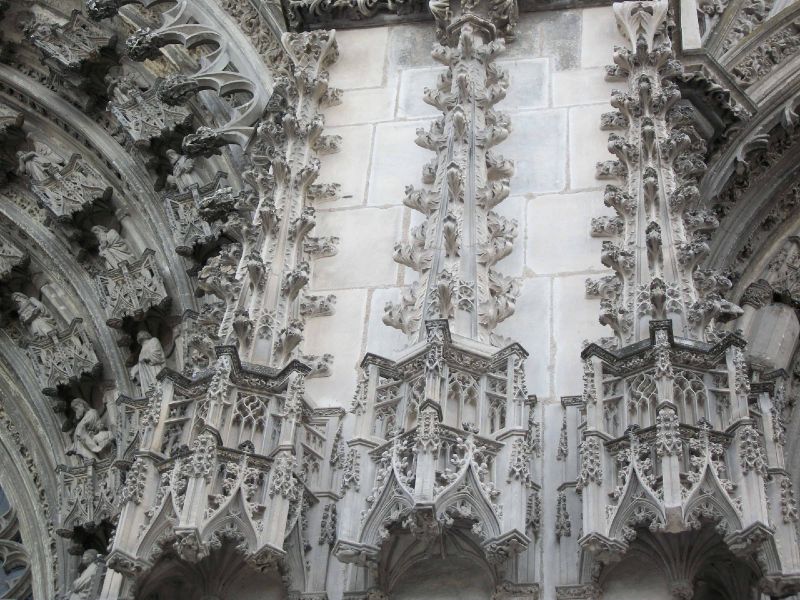
A Few Fun Facts
As with all ancient buildings with such a pedigree, Saint-Gatien has an amazing history. Here are just a few of the fun facts to entice you to put this cathedral on your bucket list of things to see in future travels:
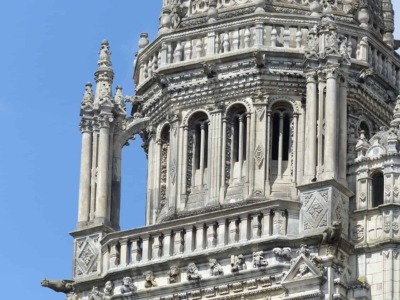 It is the 4th cathedral on this site, stretching back to the time before the Roman Empire fell.
It is the 4th cathedral on this site, stretching back to the time before the Roman Empire fell.- It is named after St. Gatianus, the founding bishop of Tours in the 300s. He was one of the seven “Apostles of Gaul” sent by Pope Fabian (d. 250 AD) to evangelize the French people.
- King St. Louis IX gave money and impetus for the building of the Gothic structure we see today, which was begun in earnest in the year 1220 after an earlier attempt to build it was destroyed by fire.
- During the French Revolution, much of its statuary on the front portal was smashed and the church was turned into a “Temple of Reason”– Napoleon, despite all his other sins, turned it back into a house of worship.
- The south tower contains four bells of varying sizes, the largest of which is called Christus and weighs 4,189 lbs! It was hidden during the French Revolution to keep it from being melted down for weaponry.
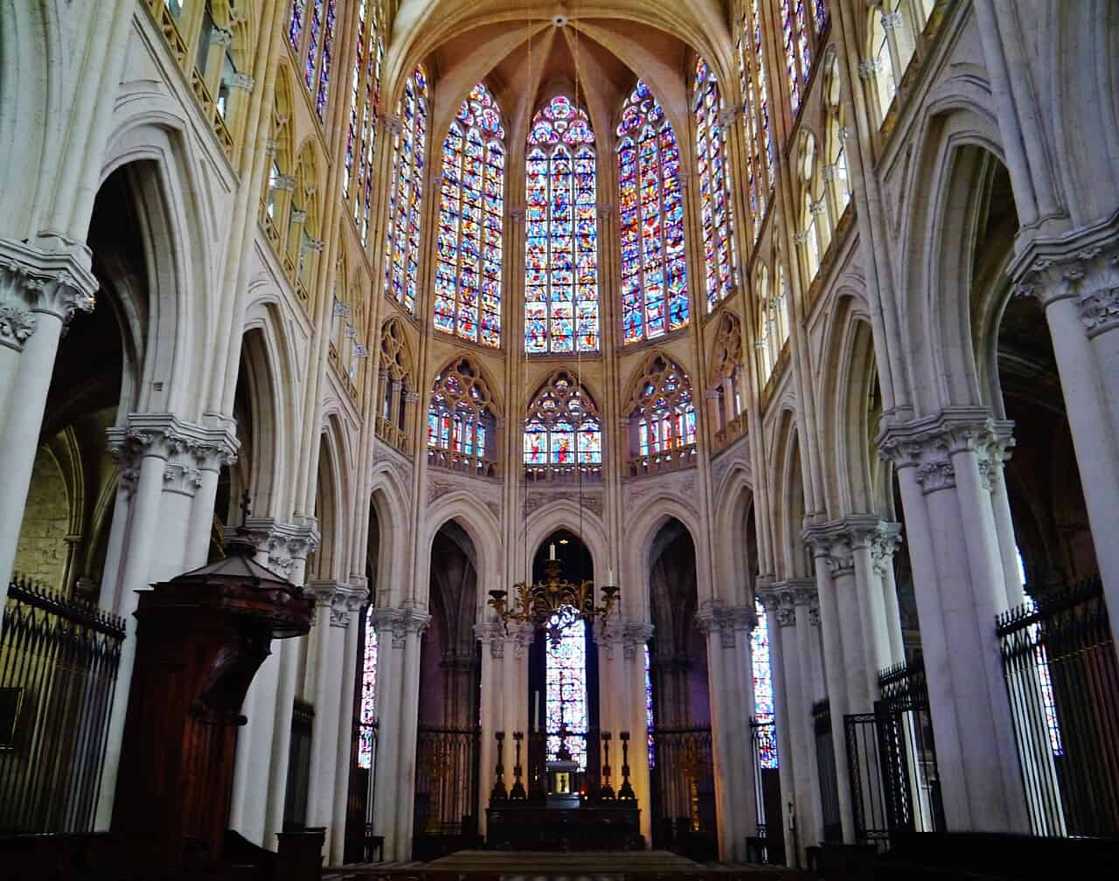
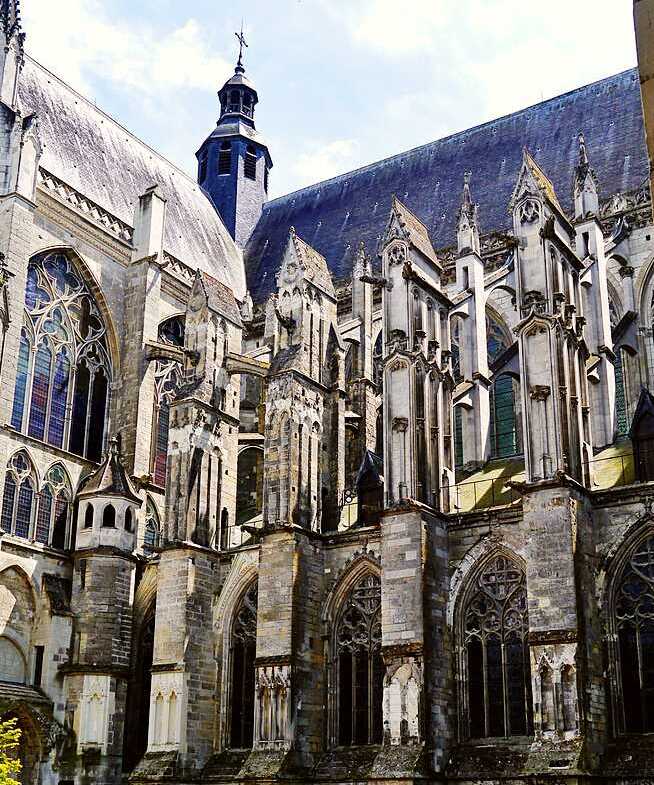
Style and Visual Effect
The cathedral is in the traditional Gothic style with all the elements of a mature Gothic structure:
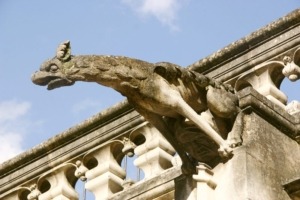 Its walls consist of 3 levels and are punctuated by stained glass windows that fill the space with light
Its walls consist of 3 levels and are punctuated by stained glass windows that fill the space with light- It has rose windows at the ends of 3 aisles
- It is cross-shaped
- With pointed arches and flying buttresses
- As well as monuments and above-ground tombs for nobility.
- And don’t forget the gargoyles!
When you look at the façade and the overall appearance, you won’t be surprised that the decorative style is known as “Flamboyant,” which was developed in the late 1400s just as they reached the point of installing the outer brickwork.
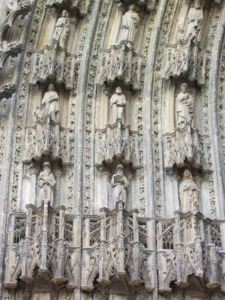 The style lasted for about 100 years until Renaissance styling took over church construction. It is characterized by elaborate stone tracery (both interior and exterior) that sported balancing S-shaped curves and decorative ribs and lines that look like flames and flowers.
The style lasted for about 100 years until Renaissance styling took over church construction. It is characterized by elaborate stone tracery (both interior and exterior) that sported balancing S-shaped curves and decorative ribs and lines that look like flames and flowers.
The overall effect of the sinuous and delicate lines is that the stone takes on the appearance of lace! Hence the cathedral’s nickname. Thank God for the French.
I think it best to end my commentary right here and let the magnificent cathedral speak for itself. I’ll finish with one final point: I’m sure you’ll agree with me that against such a monument of grace and beauty…the blasphemers don’t stand a chance.
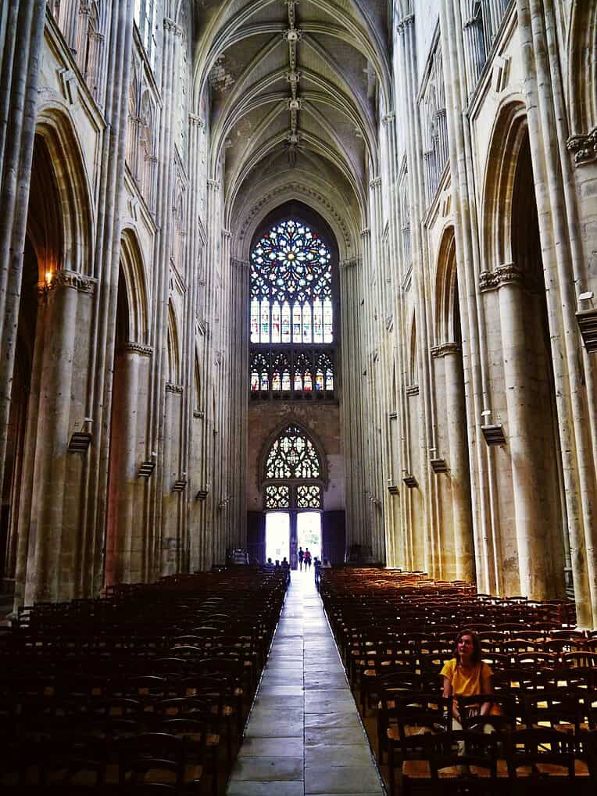
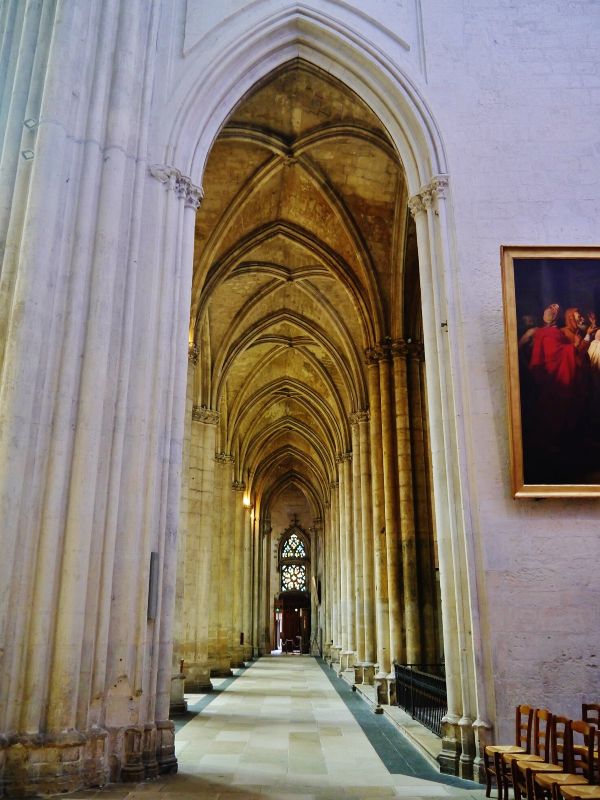
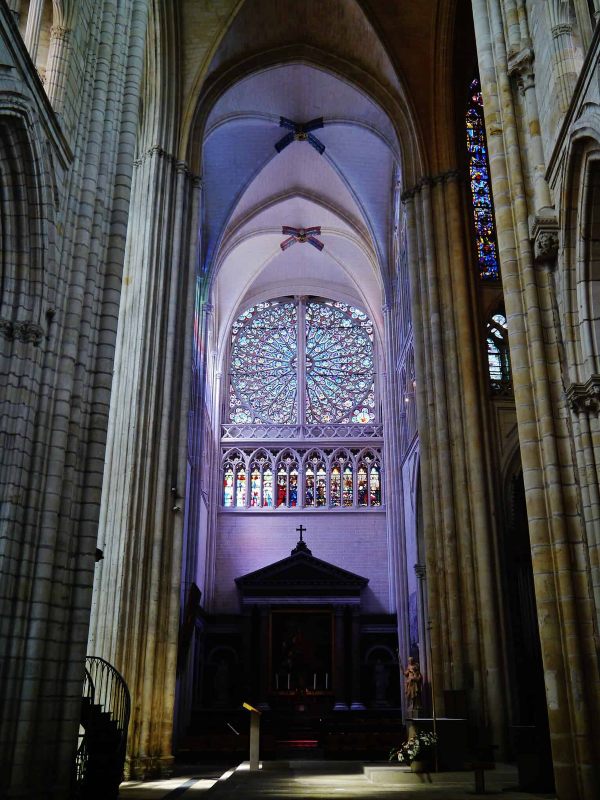
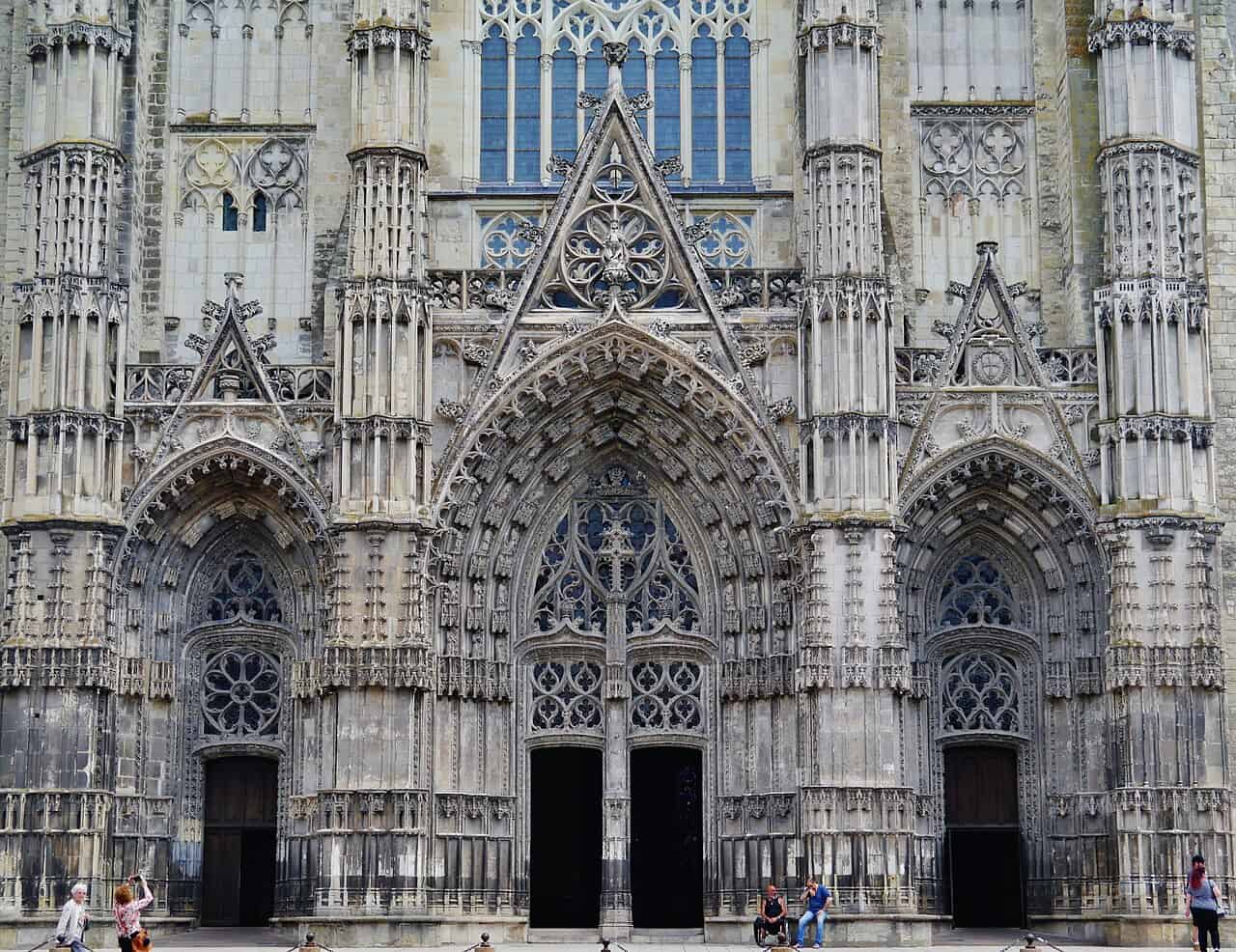
La cathédrale Saint-Gatien de Tours (2:38 with French subtitles)
———-
Photo Credits: Interior/Exterior pictures of cathedral by Zairon via Wikimedia unless otherwise noted, CC BY-SA 4.0; Gargoyle (GO69); Vault (Guillaume Piolle); Organ Pipes (Hans-Jörg Gemeinholzer); Cloister (LeZibou).
[Note: This article is a reproduction of the Sacred Windows Email Newsletter of 8/11/24. Please visit our Newsletter Archives.]
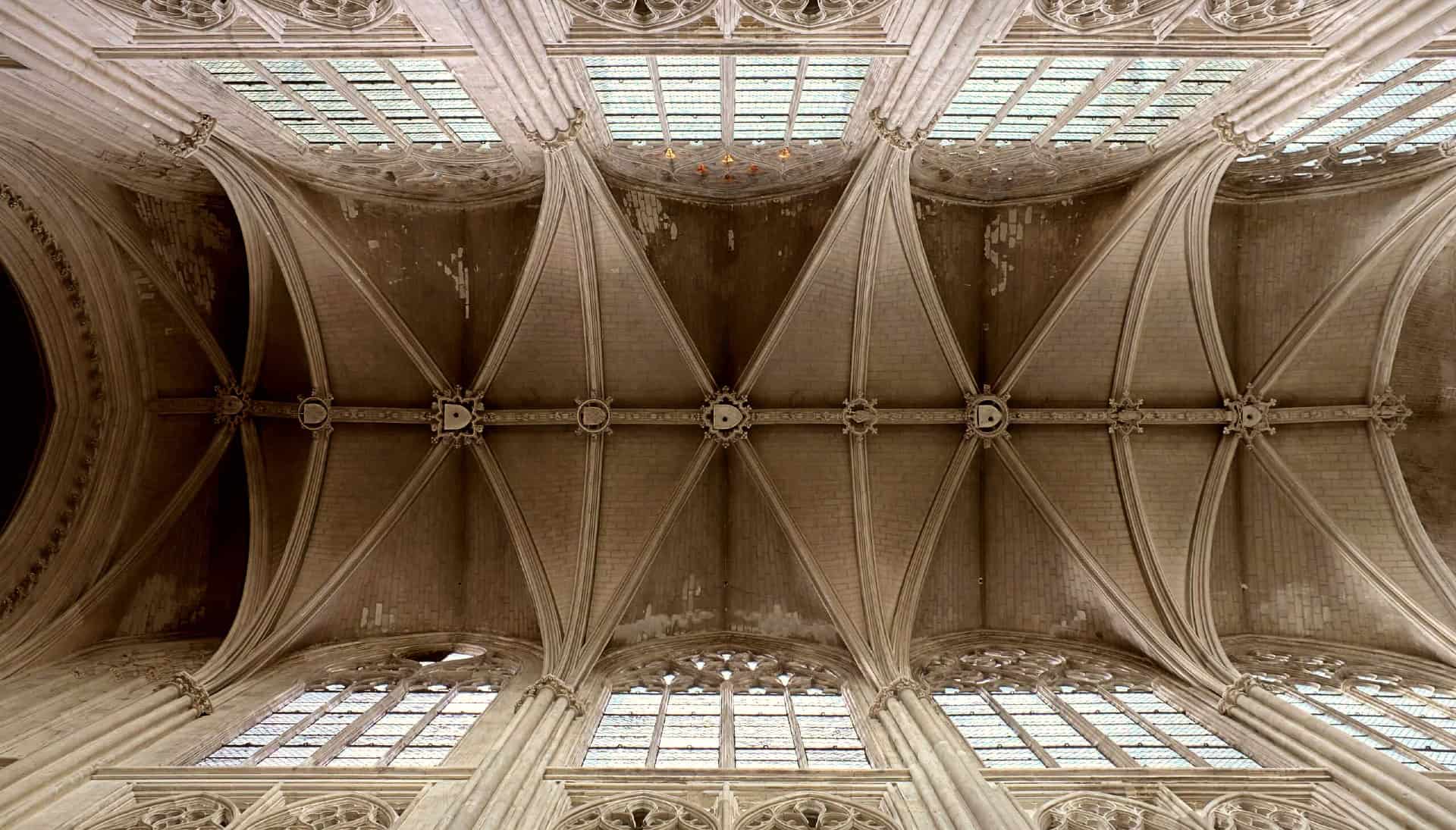
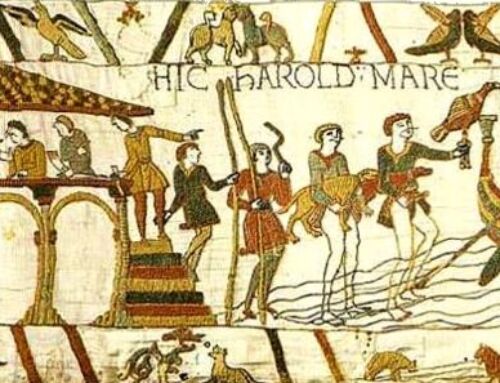


Leave A Comment